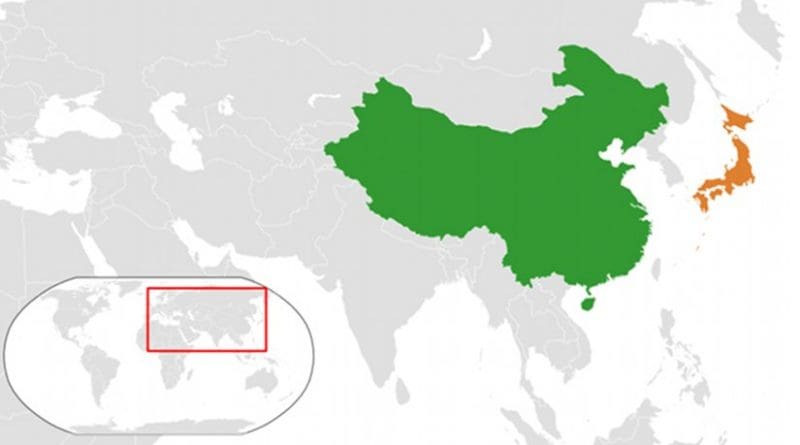China Inflicts An Arms Race On Japan – Analysis
By SAAG
By Dr. Subhash Kapila
“China is changing its roles and missions and Japan needs to do that as well. Our capabilities must be a match for Chinese capabilities. If we are asked (to respond to a military threat), we can’t say: ‘Sorry, we are not prepared for that’. This is not an acceptable answer”. — Former Chief of Japanese Navy
“There is a danger of China and Japan having a military conflict. One country must make concessions, but I do not see Japan making concessions. Both sides want to solve the situation peacefully, but which side can provide the right approach?” — Yan Xueteng, China’s most famous foreign policy strategist
China and Japan are both at political and strategic crossroads and their destinies seem to be heading towards an intense arms race if not a direct military clash. Richard Segal has wisely observed that historically we have never had a strong China and a strong Japan at the same time in this region.
Comparatively, it is China that has in the last five years or so that has unleashed a long string of provocative acts against Japan. These provocations have heightened Japanese threat perceptions on China. Heading the list is the recent spate of Chinese and Japanese threats and counter- threats hurled over the Senkaku Islands.
China today can be perceived to be inflicting an arms-race on Japan in a manner replicating the United States infliction of an arms race on the Former Soviet Union during the Cold War, to economically weaken Japan and remove it as a peer strategic competitor against China in East Asia.
Strategically noticeable today is that in face of the intensifying China Threat perceptions, Japan stands engaged in military preparations to meet any Chinese political or military coercion from China. The recent unveiling of the over 19,000 ton powerful Japanese Navy helicopter destroyer is a powerful reminder that China has indeed inflicted an arms race on Japan.
The Japanese Navy helicopter destroyer is only a ‘destroyer’ in name. Indeed it is a mini-aircraft carrier in terms of capabilities and punch. Two more such Japanese Navy mini-aircraft carriers are under speedy construction along with other combatant ships and submarines.
Against such a contextual developing security environment in East Asia fraught with unpredictable strategic consequences, the moot questions that arise are: (1) China’s underlying strategic aims against Japan (2) Chinese strategy to achieve its end-aim objectives (3) Does China credibly perceives that Japan would strategically yield to Chinese strategic domination?
China’s end-game against Japan is to strategically downsize Japan with multiple aims. First and foremost is to destroy the credibility of the US-Japan Mutual Security Treaty. Secondly, to undermine Japan’s status as the peer strategic competitor in East Asia. Thirdly, to inflict an arms-race on Japan and economically ruin it.
United States ambivalence on the Senkaku Islands dispute has the potential to sow misgivings in Japanese strategic planning against China. Weak US responses to China’s political and military coercion of Japan could prompt Japan to explore other options. On both counts it suits China.
Japan downsized strategically would no longer be able to function as a peer competitor of China in East Asia. The military differentials between China and Japan are asymmetric and Japan overcomes this military disability by the strategic ballast provided by the United States countervailing power and its military linkages to Japan.
China ruining Japan by inflicting an arms- race on Japan is highly debatable on all counts—- economic, political and strategic. Japan’s economic growth rates may not match comparatively with those of China but Japan has a strong latent economic vitality and less economic vulnerabilities than China in the event of a conflict.
Politically, Japan is viewed as a responsible stakeholder in East Asian security and has the full backing of not only the United States but also that of the European Union and NATO. China is perceived as a regional spoiler state with only North Korea and Pakistan as allies.
Strategically, the United States has a vital stake in ensuring Japan continues to exist as a peer competitor of China in the region. NATO and the European Union have similar stakes in Japan’s security. Australia and now India too seem to be willing to add to the overall strategic ballast that the United States provides to Japan
China’s strategy to achieve its end-aims against Japan seems to be unfolding in a graduated manner involving brinkmanship on territorial disputes, raising confrontational temperatures by non-military means and inflicting an overall arms-race on Japan in a manner discussed already above.
The last issue requiring discussion is whether China seriously perceives that Japan would strategically yield to Chinese domination in East Asia or also whether China can really belittle Japan strategically. This issue has two dimensions, namely, whether Japan’s historical traditions and its latent nationalism would submit to Chinese domination. The second dimension is whether the international community and the United States more specifically would allow Japan to submit to Chinese domination.
On the first count, it can be asserted that it goes against the Japanese national character and traditions to do so. Historically, too the evidence is all against it.
On the second dimension, it can be safely asserted that the rising aggressiveness of China and its brinkmanship strategies, the international community has a vested stake in maintaining Japan as a strong counterweight against China. One would even stick one’s neck out to assert that even Russia would think likewise.
Concluding, a single observation that can be made is that China undoubtedly has unleashed an arms-race on Japan but an arms-race from which Japan is not shirking. In its wake one would witness a highly surcharged strategic environment in Asia Pacific in which China would end up isolated politically and strategically.

